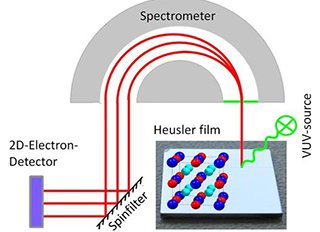Heusler alloys shown to have 100% spin polarization
Researchers from the Johannes Gutenberg University Mainz (JGU) managed to directly observe the 100% spin polarization of a Heusler compound. A Heusler alloy is made from several metallic elements arranged in a lattice structure, and the researchers used the compound Co2MnSi. This paves the way towards using Heusler materials for spintronics devices.

Spin polarization is the degree of parallel orientation of the spins of the electrons that transport the charge. The ideal spintronics material has the maximum possible spin polarization. The Heusler alloy used in this material was shown to have an almost complete spin polarization at room temperature.